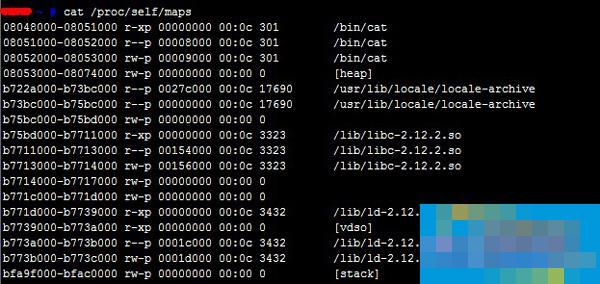
Hot search terms: 360 Security Guard Office365 360 browser WPS Office iQiyi Huawei Cloud Market Tencent Cloud Store

Hot search terms: 360 Security Guard Office365 360 browser WPS Office iQiyi Huawei Cloud Market Tencent Cloud Store
Linux memory usage needs to be maintained within a certain ratio. If the memory usage is too high, the system can still run, but it will affect the speed. This article will introduce how to analyze memory exhaustion in Linux?

When testing the NAS performance, I used fstest to write for a long time and analyzed the reasons for the poor performance. I found that the memory usage of the server host was very high.
1. First check the memory# top -M
top - 14:43:12 up 14 days, 6 min, 1 user, load average: 8.36, 8.38, 8.41
Tasks: 419 total, 1 running, 418 sleeping, 0 stopped, 0 zombie
Cpu(s): 0.0%us, 0.2%sy, 0.0%ni, 99.0%id, 0.7%wa, 0.0%hi, 0.0%si, 0.0%st
Mem: 63.050G total, 62.639G used, 420.973M free, 33.973M buffers
Swap: 4095.996M total, 0.000k used, 4095.996M free, 48.889G cached
PID USER PR NI VIRT RES SHR S %CPU %MEM TIME+ COMMAND
111 root 20 0 0 0 0 S 2.0 0.0 0:25.52 ksoftirqd/11
5968 root 20 0 15352 1372 828 R 2.0 0.0 0:00.01 top
13273 root 20 0 0 0 0 D 2.0 0.0 25:54.02 nfsd
17765 root 0 -20 0 0 0 S 2.0 0.0 0:11.89 kworker/5:1H
1 root 20 0 19416 1436 1136 S 0.0 0.0 0:01.88 init
. . . . .
It is found that the memory is basically used up. What process is occupying it? The top command found that the number one %MEM was only a few tenths.
2. Check the memory usage of the kernel space through the vmstat -m command. # vmstat -m
Cache Num Total Size Pages
xfs_dqtrx 0 0 384 10
xfs_dquot 0 0 504 7
xfs_buf 91425 213300 384 10
fstrm_item 0 0 24 144
xfs_mru_cache_elem 0 0 32 112
xfs_ili 7564110 8351947 224 17
xfs_Linux/1672.html‘ target=’_blank‘》inode 7564205 8484180 1024 4
xfs_efi_item 257 390 400 10
xfs_efd_item 237 380 400 10
xfs_buf_item 1795 2414 232 17
xfs_log_item_desc 830 1456 32 112
xfs_trans 377 490 280 14
xfs_ifork 0 0 64 59
xfs_da_state 0 0 488 8
xfs_btree_cur 342 437 208 19
xfs_bmap_free_item 89 288 24 144
xfs_log_ticket 717 966 184 21
xfs_ioend 726 896 120 32
rbd_segment_name 109 148 104 37
rbd_obj_request 1054 1452 176 22
rbd_img_request 1037 1472 120 32
ceph_osd_request 548 693 872 9
ceph_msg_data 1041 1540 48 77
ceph_msg 1197 1632 232 17
nfsd_drc 19323 33456 112 34
nfsd4_delegations 0 0 368 10
nfsd4_stateids 855 1024 120 32
nfsd4_files 802 1050 128 30
nfsd4_lockowners 0 0 384 10
nfsd4_openowners 15 50 392 10
rpc_inode_cache 27 30 640 6
rpc_buffers 8 8 2048 2
rpc_tasks 8 15 256 15
fib6_nodes 22 59 64 59
pte_list_desc 0 0 32 112
ext4_groupinfo_4k 722 756 136 28
ext4_inode_cache 3362 3728 968 4
ext4_xattr 0 0 88 44
ext4_free_data 0 0 64 59
ext4_allocation_context 0 0 136 28
ext4_prealloc_space 42 74 104 37
ext4_system_zone 0 0 40 92
Cache Num Total Size Pages
ext4_io_end 0 0 64 59
ext4_extent_status 1615 5704 40 92
jbd2_transaction_s 30 30 256 15
jbd2_inode 254 539 48 77
. . . . . . . .
It was found that these two values are very high: xfs_ili xfs_inode takes up a lot of memory.
Okay, the above is all the content brought to you by the editor of Huajun. Isn’t it very simple? Have you learned it? If you want to know more related content, please pay attention to Huajun information at any time. Welcome to Huajun to download!
 How to mirror symmetry in coreldraw - How to mirror symmetry in coreldraw
How to mirror symmetry in coreldraw - How to mirror symmetry in coreldraw
 How to set automatic line wrapping in coreldraw - How to set automatic line wrapping in coreldraw
How to set automatic line wrapping in coreldraw - How to set automatic line wrapping in coreldraw
 How to draw symmetrical graphics in coreldraw - How to draw symmetrical graphics in coreldraw
How to draw symmetrical graphics in coreldraw - How to draw symmetrical graphics in coreldraw
 How to copy a rectangle in coreldraw - How to draw a copied rectangle in coreldraw
How to copy a rectangle in coreldraw - How to draw a copied rectangle in coreldraw
 How to separate text from the background in coreldraw - How to separate text from the background in coreldraw
How to separate text from the background in coreldraw - How to separate text from the background in coreldraw
 WPS Office 2023
WPS Office 2023
 WPS Office
WPS Office
 Minecraft PCL2 Launcher
Minecraft PCL2 Launcher
 WeGame
WeGame
 Tencent Video
Tencent Video
 Steam
Steam
 CS1.6 pure version
CS1.6 pure version
 Eggman Party
Eggman Party
 Office 365
Office 365
 What to do if there is no sound after reinstalling the computer system - Driver Wizard Tutorial
What to do if there is no sound after reinstalling the computer system - Driver Wizard Tutorial
 How to switch accounts in WPS Office 2019-How to switch accounts in WPS Office 2019
How to switch accounts in WPS Office 2019-How to switch accounts in WPS Office 2019
 How to clear the cache of Google Chrome - How to clear the cache of Google Chrome
How to clear the cache of Google Chrome - How to clear the cache of Google Chrome
 How to practice typing with Kingsoft Typing Guide - How to practice typing with Kingsoft Typing Guide
How to practice typing with Kingsoft Typing Guide - How to practice typing with Kingsoft Typing Guide
 How to upgrade the bootcamp driver? How to upgrade the bootcamp driver
How to upgrade the bootcamp driver? How to upgrade the bootcamp driver